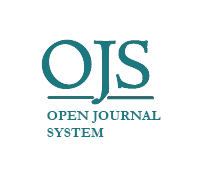Pengukuran Kinerja Reksa Dana Syariah Berbasis pada Risiko dan Tingkat Pengembalian
DOI:
https://doi.org/10.22219/jrak.v12i2.21511Keywords:
Sharia Mutual Funds, Investment, Fixed Income, RiskAbstract
This study aims to determine the performance of Sharia Mutual Funds which is very useful for investors in making investment decisions in Sharia Mutual Funds. This research focuses on Fixed Income Sharia Mutual Funds. The research data were obtained from secondary published by the Indonesia Stock Exchange and Bareksa in the form of a report on Net Asset Value and the Rate of Return for the period 2018-2020. The data is analyzed using a risk and rate of return approach which aims to determine the performance of Fixed Income Sharia Mutual Funds. The results reveal that the performance of Fixed Income Sharia Mutual Funds with a risk approach, namely the least risky Fixed Income Sharia Mutual Funds in 2020. By using the rate of return approach, the findings shed a light on the highest Fixed Income Sharia Mutual Funds performance in 2019. Thus, it can be concluded that the performance of Fixed Income Sharia Mutual Funds based on a risk and return approach has a low risk and positive performance.
Downloads
References
Aminah, L. S. (2021). The Effect of Current Ratio, Net Profit Margin, and Return on Assets on
Stock Return (Study on Food and Beverages Companies Listed on the Indonesia Stock
Exchange 2015-2017 Period). MARGINAL : Journal of Management, Accounting, General
Finance And International Economic Issues, 1(1), 1–9.
https://doi.org/https://doi.org/10.55047/marginal.v1i1.8
Anggara, A. (2017). Analisis Kinerja Reksa Dana Saham Dengan Metode Sharpe, Treynor Dan
Jensen. Management Analysis Journal, 13-22.
Bodi, K. (2014). Manajemen Portofolio dan Investasi, Edisi 9 Buku 1. Jakarta: Salemba Empat.
Fahmi, I. (2015). Pengantar Teori Portofolio dan Analisis Investasi. Bandung: Alfabeta.
Gitman, J. (2017). Fundamental of Investing. New York: Pearson.
Halim, A. (2015). Analisis Investasi dan Aplikasinya. Jakarta: Salemba Empat.
Jogiyanto. (2015). Teori Portofolio dan Analisis Investasi Edisi 10. Yogyakarta: BPFE
Yogyakarta.
OJK. (2015). POJK Nomor 19/POJK.04/2015 tentang Penerbitan dan Persyaratan Reksa Dana
Syariah.. Jakarta: Otoritas Jasa Keuangan.OJK. (2019). Penerbitan dan Persyaratan Reksadana Syariah Nomor 33 /POJK.04/2019. Jakarta:
Otoritas Jasa Keuangan.
Pratiwi, N. (2017). Analisis Perbandingan Kinerja Reksadana Saham Syariah dan Reksadana
Konvensional (Reksadana yang Terdaftar pada OJK Tahun 2013-2015). EKONOMIKA
SYARIAH: Journal of Economic Studies, 48-60.
Sumarmo, S. Y. (2019). Perbandingan Kinerja Investasi Saham Syariah Dan Konvensional Dalam
Menentukan Kebijakan Investasi. JURNAL MADANI: Ilmu Pengetahuan, Teknologi, dan
Humaniora, 175-186.
Tandelilin, E. (2017). Analisis Investasi dan Manajemen Portofolio. Yogyakarta: BPFE .
Yudawanto, A. (2017). Analisis Kinerja Reksa Dana Pendapatan Tetap Dengan Metode Sharpe,
Treynor Dan Jensen. Jurnal Administrasi Bisnis (JAB)|Vol. 45 No. 1, 125-132.
www. Bareksa.com
www.idx.com
Downloads
Published
Issue
Section
License
Copyright (c) 2022 Khoiriyah Trianti, Yulis Nurul Aini, Arif Luqman Hakim , Afifah Nur Millatina

This work is licensed under a Creative Commons Attribution 4.0 International License.

Jurnal Reviu Akuntansi dan Keuangan is licensed under a Creative Commons Attribution-NonCommercial-ShareAlike 4.0 International License.
Authors who publish with this journal agree to the following terms:
- Authors retain copyright and grant the journal right of first publication with the work simultaneously licensed under a Creative Commons Attribution-NonCommercial-ShareAlike 4.0 International License that allows others to share the work with an acknowledgement of the work's authorship and initial publication in this journal.
- Authors are able to enter into separate, additional contractual arrangements for the non-exclusive distribution of the journal's published version of the work (e.g., post it to an institutional repository or publish it in a book), with an acknowledgement of its initial publication in this journal.
- Authors are permitted and encouraged to post their work online (e.g., in institutional repositories or on their website) prior to and during the submission process, as it can lead to productive exchanges, as well as earlier and greater citation of published work (See The Effect of Open Access).










